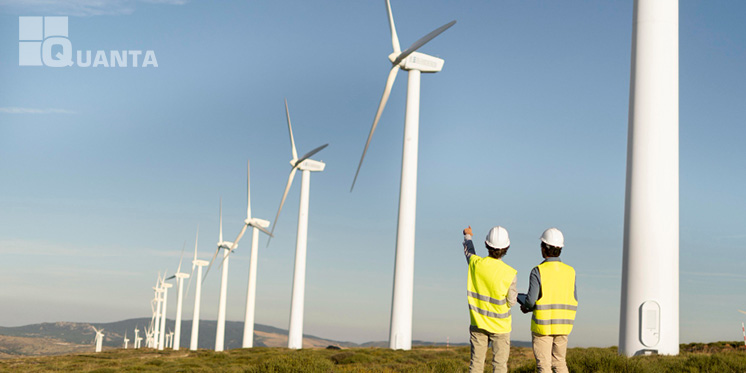Gujarat has been leading the renewable energy revolution, and this is only the beginning. With its vast solar fields, strong winds along the coastline, and innovative bioenergy projects, the state is setting new benchmarks for sustainable development.
But behind every successful renewable energy plant lies one critical step: Front-End Engineering Design (FEED). Without it, projects risk delays, cost overruns, and technical challenges.
At Quanta Process and Project Services Pvt. Ltd., we believe that good engineering starts long before the first shovel hits the ground. It starts with smart, thoughtful planning — and that’s exactly what FEED is all about.
What is Front-End Engineering Design (FEED)?
Laying the Groundwork for Success
Think of FEED as the detailed blueprint of a project — it’s where ideas on paper start turning into something real.
During the FEED phase, engineers thoroughly analyze the project’s technical, economic, and environmental dimensions. They study the site, map out processes, choose the right equipment, create early-stage layouts, estimate costs, and figure out timelines.
In short: FEED gives you a clear, practical plan to move forward — not just dreams and drawings.
Some key parts of FEED include:
- Site surveys and feasibility reports
- Process design and preliminary engineering
- Equipment sizing and selection
- Cost estimation and budgeting
- Environmental and regulatory compliance reviews
Skipping or rushing through FEED can spell trouble later, which is why getting it right is so important — especially for complex renewable energy projects.
The Role of FEED in Renewable Energy Projects
Turning Big Ideas Into Built Projects
Building renewable energy plants — whether they run on solar, wind, biomass, or even hydrogen — comes with its own set of challenges.
FEED acts as the bridge between an ambitious idea and a real-world facility that works as intended. It ensures that every decision, from choosing the right solar panels to figuring out how to connect to the local grid, is carefully thought through.
Here’s how FEED shapes renewable energy projects:
- Choosing the Right Site: Maximizing sun exposure, wind speeds, or biomass supply is crucial — FEED helps identify the best location.
- Selecting the Best Technology: FEED studies help choose the right equipment, keeping efficiency and local conditions in mind.
- Planning for the Grid: FEED ensures the plant can be integrated smoothly into the existing power network.
- Keeping Budgets on Track: Accurate upfront estimates prevent nasty financial surprises later.
- Navigating Regulations: A strong FEED process considers all permitting and environmental regulations early, avoiding costly delays.
When FEED is done properly, the transition from “project idea” to “project reality” becomes smoother, faster, and far less risky.
Benefits of Strong FEED for Renewable Energy in Gujarat
Why Gujarat’s Renewable Energy Future Depends on Great Planning
Gujarat is uniquely positioned for renewable energy success, but it also presents some challenges — from varied soil conditions to stringent environmental norms. That’s why strong Front-End Engineering Design in Gujarat is more than just helpful — it’s essential.
Here’s what great FEED delivers:
1. Reduces Risks: Spotting every potential roadblock early means you can fix them before they become expensive problems.
2. Provides Financial Clarity: With better cost estimates and schedules, investors and developers know exactly what they’re signing up for.
3. Speeds Up Approvals: Detailed designs and clear documentation make it easier to get greenlights from government authorities.
4. Improves Resource Management: FEED helps you plan manpower, materials, and timelines more efficiently, saving both time and money.
5. Future-proofs the Plant: Good FEED ensures the plant isn’t just ready for today’s needs but can evolve with future technology and energy demands.
When you invest in a proper FEED, you’re setting the stage for a smoother project — and a stronger return on investment.
Quanta’s Expertise in Renewable FEED
Trusted Engineering, Proven Results
At Quanta Process and Project Services, we don’t use the same solution for every project. Every renewable energy project is unique — and our FEED approach reflects that.
Our experienced team brings deep industry knowledge, cutting-edge tools, and local expertise to the table. Whether it’s a 10 MW solar farm or a hybrid renewable project, we tailor our FEED services to suit your project’s specific needs.
Here’s what you can expect when you partner with Quanta:
- Detailed process designs and simulations
- Smart layouts that maximize efficiency
- Accurate cost and schedule forecasts
- Risk assessments and mitigation plans
- Clear, actionable engineering documents
- Environmental and regulatory support
We understand Gujarat’s energy landscape better than most — and we’re passionate about helping clients turn their renewable energy visions into reliable, bankable, and sustainable realities.
Conclusion
The renewable energy sector in Gujarat is buzzing with opportunity — but opportunity alone doesn’t guarantee success.
Without careful planning, even the best projects can stumble. That’s why Front-End Engineering Design in Gujarat is the hero behind every successful renewable energy plant. It’s the step that turns potential into real results.
At Quanta Process and Project Services, we’re proud to support this transformation. Our FEED expertise helps you plan smarter, build faster, and deliver better.
Let’s work together to shape Gujarat’s renewable future — one well-designed project at a time.









